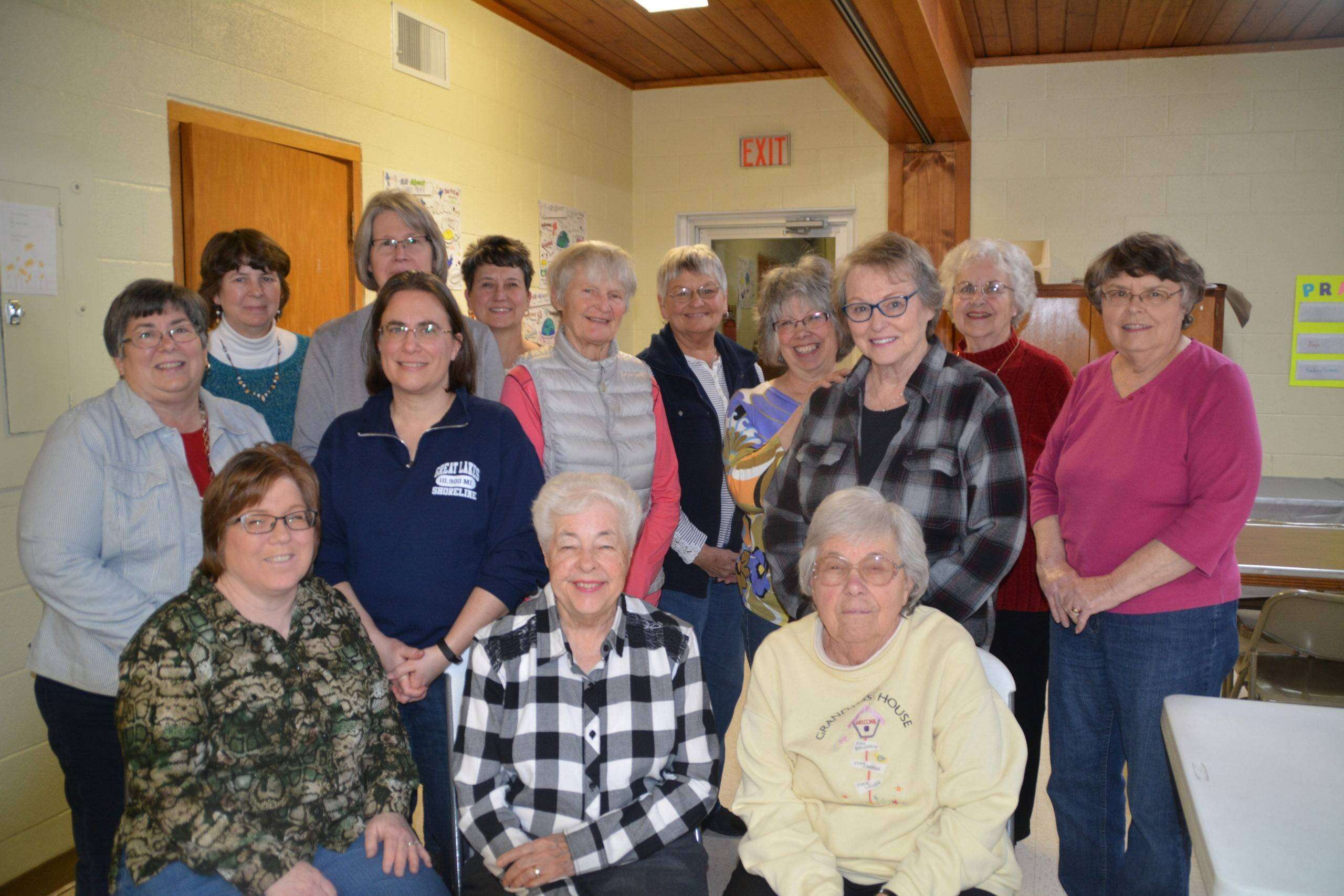
90 YEARS … The Pulaski Garden Club met April 2 at the Pulaski United Methodist Church. First row left to right: Deanne Batterson, Carol Goebel, JoAnn Beucler; second row: Regina Partee, Tammie Rettig, Kay Beck, Judy Shilling; third row: Rosetta Luke, Joyce Paepke, Cynthia Wise, Connie Simmons and fourth row: Cam Miller, Cathy Sharp, Barb Deetz. (PHOTO BY JIM PRUITT)
Story originally appeared: April 11th, 2018
By: James Pruitt
Ten times a year a hardy group of local women prolong a tradition that extends for 90-plus years. The Pulaski Garden Club met once again in the Fellowship Hall of the local United Methodist Church. More than a dozen women attended the April 2 meeting.
The size is similar to the first meeting held in 1927. The club is only one of two in Williams County and the only one aligned with the state’s garden club group.
At its peak whole families would come out for one of the highlights of the social calendar. While the numbers may be down, the excitement and passion more than make up for it. Club members discussed their favorite butterflies as part of roll call. Laughter filled the room as the meeting progressed. The meetings are a celebration of all things gardening, whether flowers or vegetables. Anyone is welcome and dues are only $11 per year.
Presentations on this night dealt with milkweed and butterflies. Cam Miller, club president, brought two handmade examples of a “Flutterby” to show. The arrangements featured yucca leaves with a trimmed and windblown look with some glue dots and/or staples. The yucca in one arrangement with daisies and the other with lilies were placed in a needlepoint and then into a shallow bowl and even placed a background behind to show off the look.
Deanne Batterson presented “aschelias” also known as milkweeds, to the group. The milkweed is an herbaceous perennial which includes 140 known species. The presentation delved into the makeup of the plant, its purpose and uses. While some butterflies may get trapped in its milky substance, it is mostly a food source and a place for Monarchs to lay their eggs.
Gardeners are now planting “butterfly gardens” to support the life cycle of the monarch butterfly which is currently labeled as an endangered species, Batterson said. Another product of the milkweed is its filament, which are hollow and coated with wax and makes good insulation which was used during World War II, and now in pillows and winter coats.
Connie Simmons presented “Plants that attract butterflies.” These should be typically later summer flowers as that’s when the insects come out of their cocoons. Ideal flowers would be sedum, coneflowers, zinnias, bee balm, dianthus, Fox-glove because butterflies like a landing pad to get at the nectar. Butterflies like water nearby, but not being near a high traffic area.
A butterfly garden could have a fence nearby to protect from the winds or even a larger bush to protect them. Butterflies are attracted to bright colored flowers, noting that their eyesight is not too great plus their nectar drinking tubes are short.
“Their life cycle goes from Canada to Mexico and that the butterfly that flies by this summer their grandchildren or great-grandchildren will be by next summer to sample your butterfly garden,” Simmons said.
